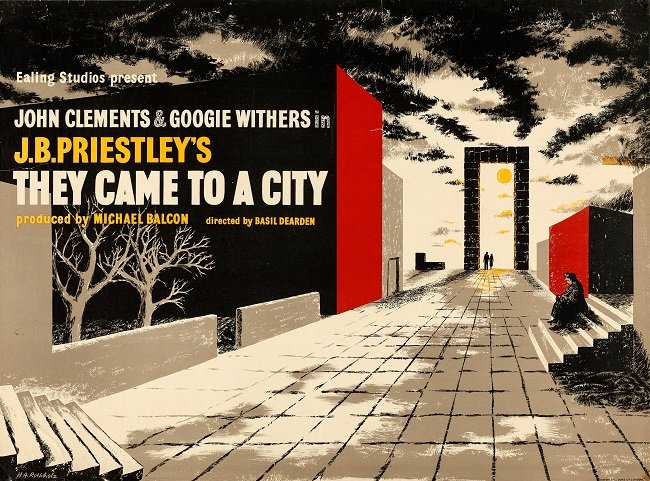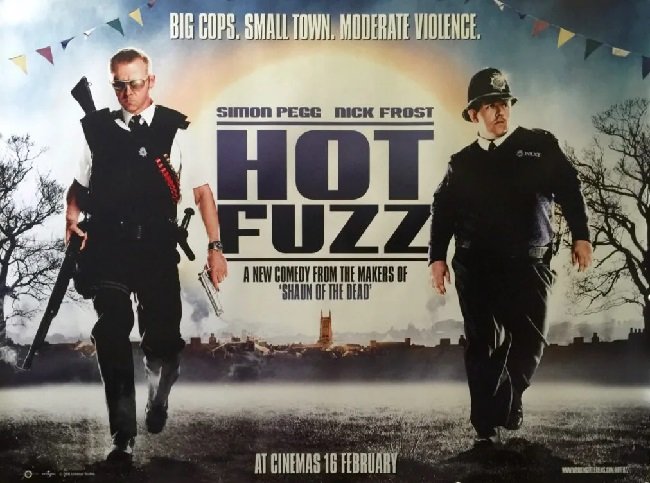An Ode to the VCR
The Sony C6 Betamax VCR. A “Titan” in the format wars
Sometimes it really helps to have “been there” to fully appreciate an event or cultural phenomenon. We now live in an age where there is easy access to a multitude of television channels and movies, 24 hours a day. TVs are no longer bulky, luxury items that sit in a corner of your lounge. They are now elegant flat screened devices that occupy nearly an entire wall, offering crystal clear, high definition picture quality. Movies are now available for home viewing a lot sooner after their theatrical release and the current pandemic has brought the era of simultaneous release on all platforms just a little bit closer. And even the most obscure and niche market films are accessible in a remastered, HD or UHD format. It’s all a far cry from my youth when cinema and television were far more compartmentalised and consumers had far less choice along with access. All of which you can explain to those born into this modern world of plenty but they’ll never fully comprehend the realities of living such a life and in such times.
I shall try to keep my reminiscing to a minimum for reasons of brevity. Anyone who is familiar with my writing will know that film played an integral part of my youth. My parents loved cinema as it was the primary form of entertainment when they grew up. Hence by the age of ten or so, I was well versed in classic Hollywood, mainly through watching films on TV with my family at weekends. However, we had little say over what they watched. Firstly it took several years for major films that had been successful at the box office to be broadcast on TV. Major titles tended to be shown at either the Christmas or Easter when audiences were potentially the biggest. Also, when a “big” movie finally got shown on TV there were often broadcast in a sanitised, re-edited version. Furthermore, if a film was originally shot in an aspect ratio such as 2:35:1 then it would be panned and scanned to accommodate the 4:3 academy ratio of TV screens. And let us not forget that commercial networks would have advertising breaks throughout. So the optimal way to view a film would be at the cinema. Watching at home on TV was an inferior experience but it was what we knew, so we accommodate it.
Bond movies came to UK TV approximately 4-5 years after their theatrical release during the 70s and 80s
Another aspect to consider was that TV companies would license the showing of movies and naturally wanted as much bang for their buck as possible. Certainly the BBC offered a broad choice. But you would often find that a lot of content just didn’t make it onto TV. Or if it did, it would be shown at obscure hours. If you failed to watch something then you missed your opportunity to do so. There was a culture of financially successful films getting re-released at the cinemas. Disney has always been an exponent of this, understanding quickly the benefits of controlling supply and demand. But broadly speaking, what you could watch was decided and controlled by private companies and driven by vested interests. So the advent of the home video cassette recorder (VCR) was a major cultural and consumer revolution. Video tape recorders (VTR) had existed since the 1950s but were mainly industry products. But the moment the technology was made available for domestic use in the 1970s via bespoke cassette formats, it quickly gained traction.
The ability to record TV programs from one station while watching another was exceedingly novel at the time. Often big TV networks prided themselves upon making viewers make a tough choice over what shows they watched at prime time. As a child I remember having to decide whether to watch either Doctor Who or Space 1999 (season 2). It’s one of the reasons why UK viewing figures for popular shows were so high at this time. This and the fact that until 1982, there were only 3 terrestrial analogue TV stations broadcasting. So naturally the VCR was met with a lot of pushback from network TV. There was a lot of talk over the legality of recording shows etc. but it was too late and the genie was out of the proverbial bottle. And then there was the second aspect that the VCR offered consumers; pre-recorded tapes containing movies or other content. Initially the big studios simply didn’t grasp that people would want to watch a movie of their own choice, at home, at a time that suited them. When they began to see how independent distributors were getting on the bandwagon they sought to “fight fire” with lawyers. The Motion Picture Association of America (MPAA) were especially aggrieved. But common sense and business acumen prevailed, leading to the growth of the video rental market, the rise of Blockbuster and the social etiquette of rewinding a tape and returning it on time.
BBFC rating title card
Now the next anecdote is specific to the UK. As soon as cinema became a popular form of entertainment in the early twentieth century, then a regulatory body was set up. A film had to be rated by the British Board of Film Censors before it could be shown in cinemas. Hence the establishment guarded public morals and suppressed sentiments and subjects it didn’t like. Mercifully this doesn’t happen now. The BBFC has changed radically in the last 20 years. It is now formally the British Board of Film Classification and it’s focus is rating. Censorship is now mainly self imposed by distributors who seek the most commercially lucrative rating. But that is a separate subject. Back in the late seventies, all cinema releases required a BBFC rating or else they didn’t get shown. VCRs, like most technological changes, caught the establishment off guard. All of a sudden there was a medium for distributing content outside of the auspices of the BBFC, free from any form of censorship. Overnight small independent video companies sprung up, disseminating any material they could get their hands on. A wealth of european exploitation cinema suddenly found its way into UK households. For someone like me it was hog heaven but it didn’t go down well with lobbyists concerned with declining morals.
In 1982 our household became a proud owner of a Sony C6 Betamax VCR. We already had an older C5 but that was a top loader. The C6 stylishly loaded tapes from the front. By now our family was fully immersed in video rental culture. There seemed to be a video rental store on every street corner. Even newsagent and corner shops would have a rack of tapes to rent for £1 or so. At this point VHS had not fully won the format wars in the UK and most stores had material equally available on both formats. I remember one that even rented V2000 tapes. At one point my Dad had rental cards for about six different establishments. We’d rent films to watch as a family and then my parents would indulge myself and my sister, so we’d often come back home with horror films. I remember one store in Burnt Ash Hill Road in Lee Green, which used to put the most lurid VHS cases in the shop window. I and my school friends would gawp at the likes of Driller Killer, Cannibal Holocaust and Zombie Flesh Eaters. But this brief halcyon period of unfettered access to uncut eurosleaze quickly came to an end.
UK poster for Lucio Fulci’s Zombi (1979)
The eighties were a decade with a strong streak of moral and social conservatism running through it. This was embodied by the National Viewers' and Listeners' Association (NVLA) led by christian lobbyist Mary Whitehouse (known to her enemies as Mary Shitehouse; a shitehouse being UK slang for a toilet). The organisation lead campaigns against the publication and broadcast of media content that it viewed as harmful and offensive, such as sex, violence, profanity and blasphemy. To cut a long story short the unregulated video market became an easy target and the NVLA and the “popular press” went for it like a dog with a bone. They coined the hyperbolic phrase, “video nasty” to describe exploitation films such as I Spit on Your Grave. As usual, the least informed and poorest thinkers among our parliamentary representatives saw an easy bandwagon to jump on. And then tragically in 1993 a two year old boy, Jamie Bulger, was murdered by two ten year old children, Robert Thompson and Jon Venables. It was an horrendous case made even worse by the tabloid feeding frenzy. It was alleged in some newspapers that the attack on Bulger was inspired by the film Child's Play 3. There was no evidence for this but the campaign against unregulated videos gained support and ultimately led to the Video Recording Act of 1984. This granted the BBFC powers to rate existing and all future video releases and ushered in a decade of censorship. Many titles simply became unavailable for nearly twenty years, such was the sense of social hysteria.
But time and tide wait for no man. The VRA had some very interesting side effects. A cottage industry of fanzines sprung up, reviewing and analysing many of the horror movies that were “temporarily available”. I met many people through this medium, participated in film festivals and partook of the black market trade in second generation VHS copies that sprung up. As the eighties gave way to the nineties and the BBFC still enforced arbitrary cuts to most mainstream films, I discovered the Laser Disc format and imported uncut movies from the US and Japan and so moved away from video tapes. Laser Disc and VHS were subsequently replaced by DVDs and by the time the year 2000 arrived, the BBFC in the UK had a major change in policy once the longstanding incumbent Director, James Ferman, retired. Censorship as I mentioned previously, is not really an issue anymore although a BBFC rating is still required to show a film theatrically or to distribute on home media. Most streaming TV platforms and VOD services rate their content in accordance with BBFC guidance. Despite my dislike of censorship, I believe in rating movies for consumer advice and believe the BBFC do a very good job of it nowadays. Leopards can sometimes change their spots.
The Pioneer DVL-909 combination Laser Disc and DVD player was a thing of beauty
I like the advances that have been made in home cinema. I prefer to watch films in the correct aspect ratio and in the best picture quality available. Hence I do not miss the technical limitations of the VHS or Betamax tapes (especially the NTSC VHS EP tapes which had awful washed out colours). But having been in the past, a consummate film collector, I still fully understand the allure of physical media. Whenever I see an old VHS rental tape at a collectors fare, it briefly rekindles that sense of excitement I got as a child. Because our access to entertainment was not as ubiquitous as today and we were also not aware of every aspect of a film production due to the internet, a VHS tape of a movie you hadn’t seen before held so much promise. When you combine this allure with an impressionable child who considers watching exploitation cinema as a test of endurance, it becomes clear why such a strong association was created and remains. VCRs, video rental stores and “video nasties” were my generations Rock and Roll, which is why just a small part of me nostalgically misses those days.




























